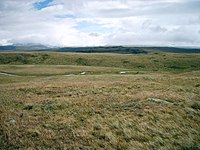
Photo from wikipedia
Abstract Analysis of data from meteorological observations near the Kursk Biosphere Station, Institute of Geography, Russian Academy of Sciences, for the past 40 years shows a steady increase in temperature… Click to show full abstract
Abstract Analysis of data from meteorological observations near the Kursk Biosphere Station, Institute of Geography, Russian Academy of Sciences, for the past 40 years shows a steady increase in temperature against the background of an increasing deficit of precipitation in this area. At the same time, the precipitation is characterized by a high instability and a contrast distribution by year, as well as by an increase in the number and duration of dry periods. Precipitation (in particular, snow accumulation) is an important source of moisture and a significant factor of functioning for forest–steppe landscapes. It is shown that different landscape types can have a two- to fourfold difference in snow accumulation, which plays a decisive role in the formation of moisture reserves. Agrolandscapes are deficient in moisture, which contributes to deeper freezing of soils, as well as to the deterioration of their water permeability and the development of a surface snowmelt runoff from fields, which leads to landscape degradation. The essence of the concept of land degradation neutrality, which mainly concerns the maintenance of global sustainable land use, is to obtain objective parameters for state of landscapes and to assess the proportion of lands exposed to degradation. Atmospheric moisture in forest–steppe landscapes is a significant factor determining their functioning and can be used as a local indicator of the concept.
Journal Title: Arid Ecosystems
Year Published: 2020
Link to full text (if available)
Share on Social Media: Sign Up to like & get
recommendations!